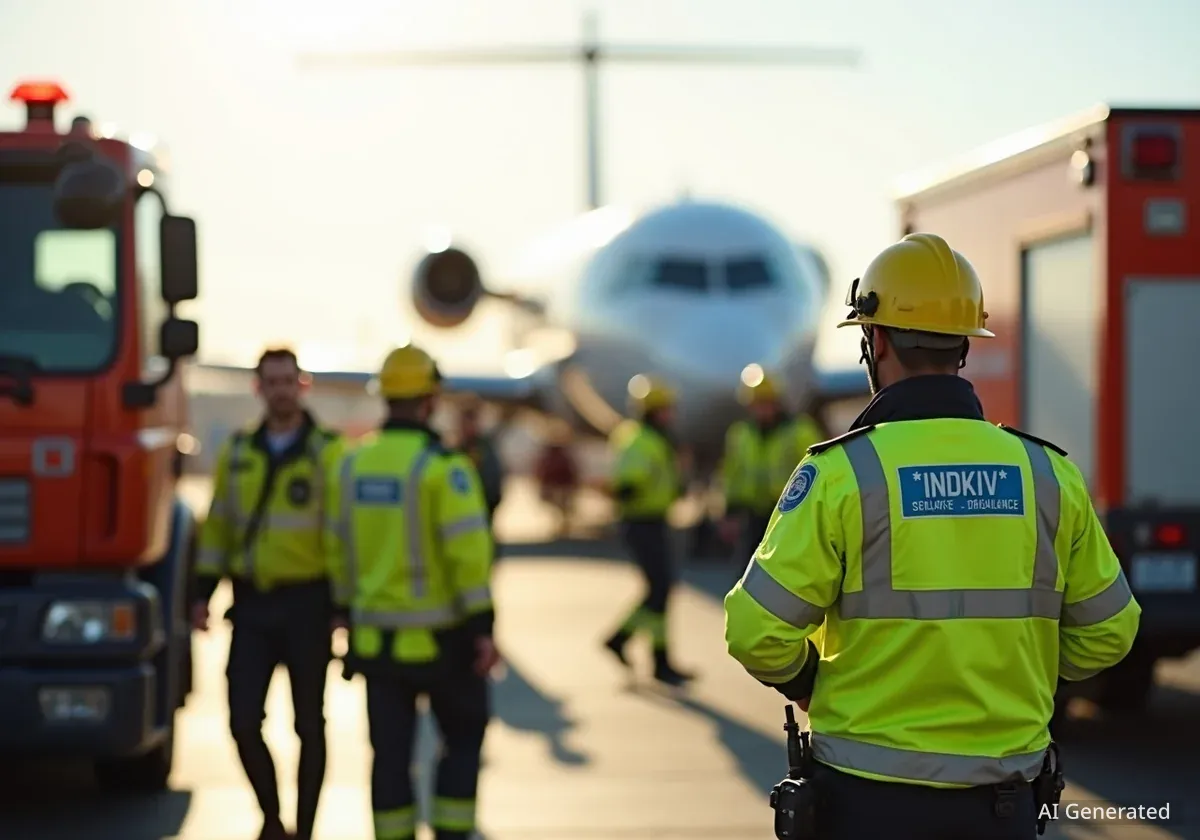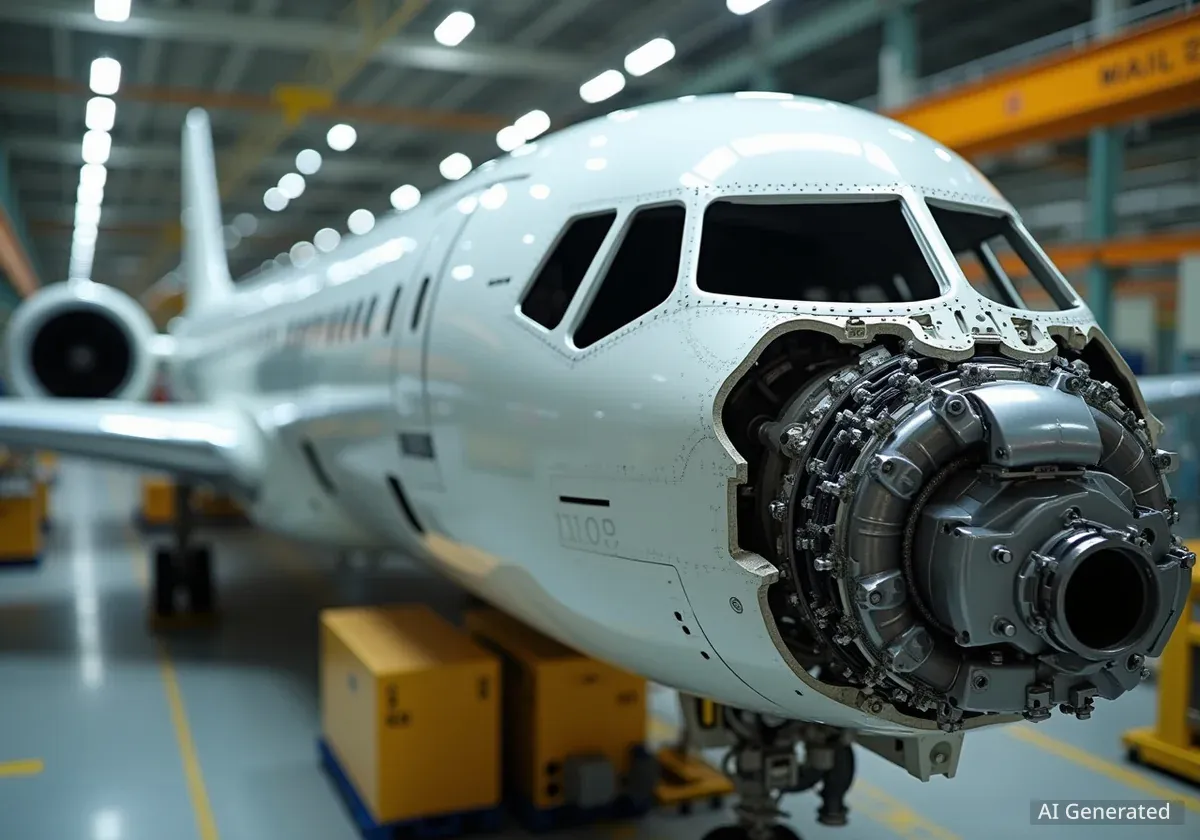Safford Regional Airport (SAD) in Arizona will lose its sole commercial air service in September 2025. This decision affects the route connecting Safford with Phoenix Sky Harbor International Airport (PHX), which is Arizona's busiest air hub. The service began only nine months prior to the announced cessation.
Cameron Atkins, the airport manager for Safford, confirmed to The Arizona Republic that the primary reason for ending the service is a lack of sufficient funding. This development marks a significant setback for air travel connectivity in the rural Graham County area.
Key Takeaways
- Safford Regional Airport will lose its only commercial flight in September 2025.
- The route connected Safford with Phoenix Sky Harbor International Airport.
- Lack of funding and aircraft type issues led to the service termination.
- The route was operated by Grand Canyon Scenic Airlines.
- This impacts regional connectivity for Graham County residents.
Safford's Air Service History and Recent Launch
For several decades following airline deregulation in the 1970s, Safford had no scheduled commercial air service. Deregulation allowed airlines to prioritize major city hubs, often leaving smaller, rural destinations without direct flight options. This changed briefly with the introduction of the Safford-Phoenix route.
Grand Canyon Scenic Airlines initiated the 144-mile route in January 2025. Initially, the service offered two daily flights between Safford and Phoenix. This provided a direct link for residents of Graham County to Arizona's main air gateway.
Flight Details
- Route Length: 144 miles
- Initial Frequency: Two daily flights
- Airline: Grand Canyon Scenic Airlines
- Total Seats Offered: 2,640 (January-September 2025)
However, the schedule was reduced to one daily flight in August 2025, just a month before flights were completely halted in mid-September 2025. Data from aviation analytics company Cirium indicates that Grand Canyon Scenic Airlines offered a total of 2,640 seats during the nine-month operational period of this route.
Funding Challenges and Grant Conflicts
The main reason cited for the termination of the service is a funding shortfall. According to airport manager Cameron Atkins, the available funds could not sustain the route long-term. This highlights the financial difficulties often faced by smaller regional airports in maintaining commercial air service.
"Ultimately, we couldn't stretch the funding far enough. Hopefully, this won't be the end of airline service in Safford. We hope we'll find a new funding source," Atkins told The Arizona Republic.
An $800,000 grant from the US Department of Transportation's Small Community Air Service Development Program was identified as a potential solution. This program aims to help smaller communities improve air service and manage airfare costs. However, a specific condition of a separate grant complicated the situation.
Background on Grants
When Phoenix Sky Harbor International Airport initially announced the Safford route, it noted that Freeport McMoRan, a major employer in Graham County, had offered grant funding. This funding was intended to support the new air service.
Jake Tomlin, president and CEO of Grand Canyon Scenic Airlines, explained the conflict. He stated that Safford Airport and the airline only discovered after the route began that Freeport McMoRan's grant required the use of multi-engine aircraft. This requirement was incompatible with the nine-seat, single-engine planes used for flights between Safford and Phoenix.
The airline's fleet includes Cessna and Vistaliner aircraft. Specifically, the Cessna 208 Caravan, a single-engine aircraft, can carry up to nine passengers. The Vistaliner, a modified De Havilland Canada DHC-6 Twin Otter turboprop, features large windows and is primarily used for scenic air tours, especially over the Grand Canyon.
Impact on Regional Connectivity
The loss of this flight significantly weakens connectivity for the rural city of Safford and Graham County. Residents will now face longer ground travel times to reach Phoenix Sky Harbor, which serves as a critical link to national and international air travel networks.
Regional air service, while sometimes seen as less profitable, is vital for the economic and social well-being of smaller communities. It provides access to major economic hubs, specialized services, and broader transportation networks that are otherwise difficult to reach.
Types of Aircraft Used
- Cessna 208 Caravan: Single-engine, up to nine passengers, 8,000 lb max takeoff weight.
- Vistaliner: Modified De Havilland Canada DHC-6 Twin Otter, turboprop, large windows, used for tours.
Programs like the Essential Air Service and the Small Community Air Service Development Program, managed by the United States Department of Transportation, exist to support these crucial regional routes. These programs acknowledge that private airlines often prioritize high-traffic, profitable routes in larger cities, leaving smaller communities underserved.
Ensuring regional air service helps maintain social and economic equity across different parts of the country. By connecting less-populated areas to major hubs, it prevents rural communities from being isolated from economic growth opportunities and national markets. The cessation of the Safford-Phoenix route underscores the ongoing challenges in sustaining such vital links.
Future Outlook for Safford Air Service
Despite the current setback, Safford airport manager Cameron Atkins expressed hope for future air service. The search for new funding sources will be critical to re-establishing commercial flights. The community's need for direct air access to Phoenix remains a key concern.
The situation in Safford illustrates the complexities involved in regional air travel. It involves balancing funding, aircraft suitability, and the specific needs of local communities. The $98 round-trip fares offered near the route's end suggest a market interest, but financial and logistical barriers proved too high.
The ongoing efforts to support small community air service reflect a broader recognition of its importance. For Safford, the immediate future involves navigating these challenges to secure a reliable air connection once again. This will require collaboration between local authorities, airlines, and federal programs.





